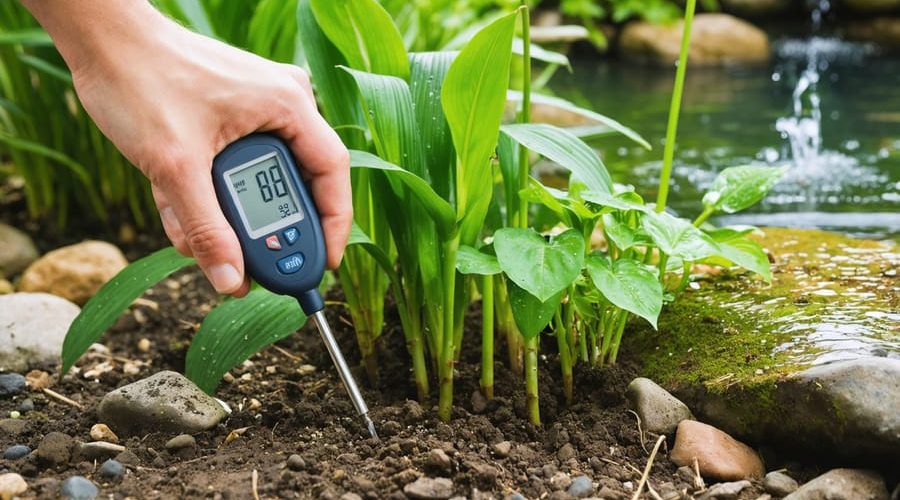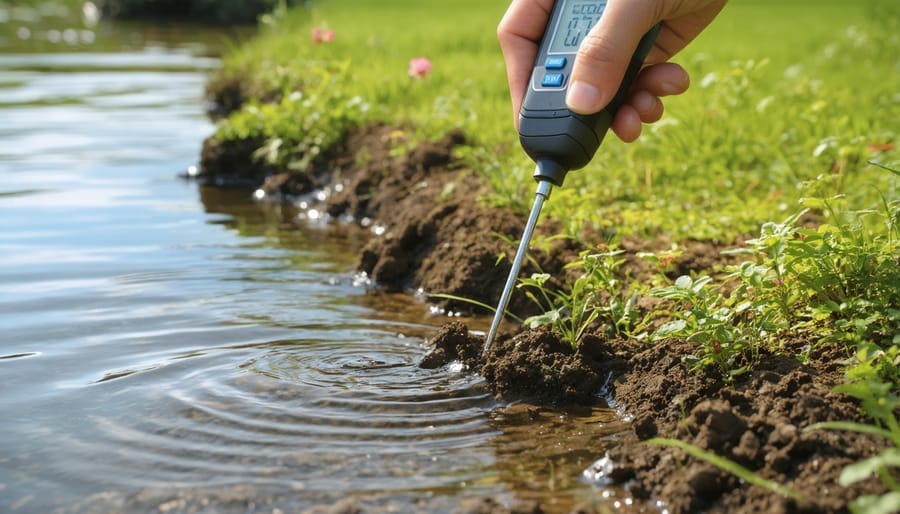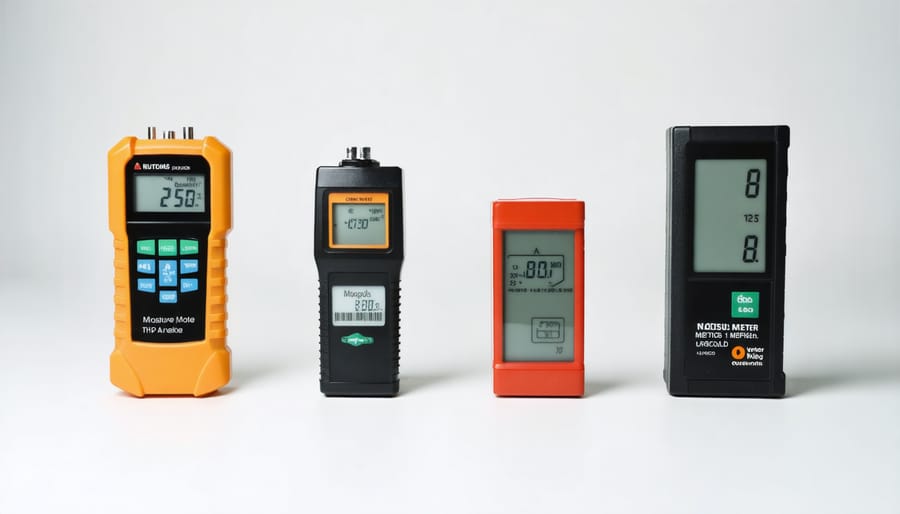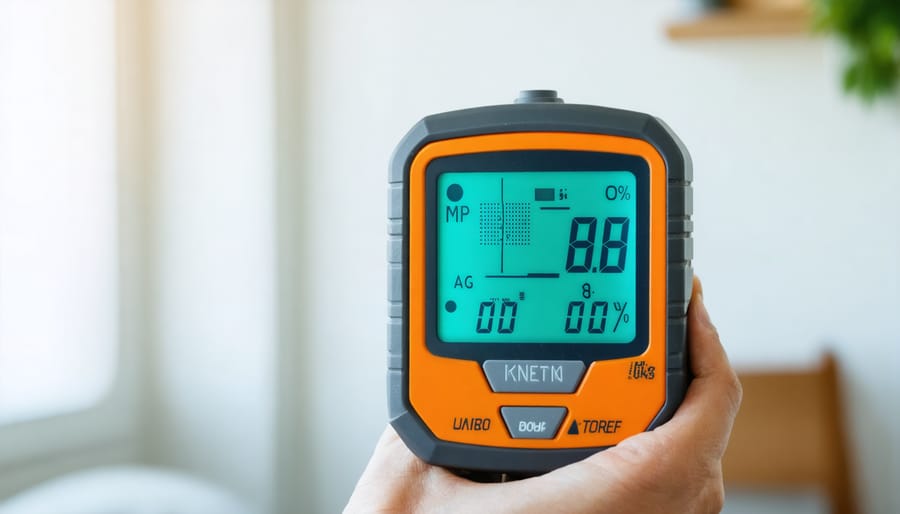
Precise Water Control: Making Your Moisture Meter Work for Water Garden Safety
Master your garden’s watering needs with a moisture meter – the essential tool that takes the guesswork out of plant hydration. Insert the meter’s probe 6 inches deep into the soil near your plant’s root zone, wait 30-60 seconds for an accurate reading, and confidently determine whether your plants need water. Modern moisture meters provide instant digital readings on a scale of 1-10, with optimal moisture levels typically falling between 4-6 for most garden plants.
Gone are the days of overwatering or underwatering your precious plants. A quality moisture meter helps prevent root rot, conserves water, and maintains optimal growing conditions throughout your garden. Whether you’re managing delicate herbs, flowering perennials, or moisture-sensitive vegetables, this simple device provides precise measurements that ensure your plants thrive in any season. Learn to interpret readings correctly, and transform your garden care routine into a science-backed practice that delivers consistent, healthy growth.
Why Moisture Meters Matter in Water Gardens
Preventing Overflow and Underground Leaks
Moisture meters play a crucial role in helping you protect your water garden from potential water-related hazards. By regularly monitoring soil moisture levels around your pond or garden features, you can quickly detect unusual wet spots that might indicate underground leaks. This early detection can prevent serious issues like soil erosion, foundation damage, or wasteful water loss.
Place your moisture meter at various points around water features, particularly near plumbing connections and liner edges. If you notice consistently high readings in areas that should be relatively dry, it’s time to investigate further. Pay special attention to readings after rain or irrigation to establish normal moisture patterns.
For pond owners, checking the soil around the pond’s perimeter can reveal hidden leaks before they become major problems. Take readings at the same spots weekly, and keep a simple log of the measurements. Sudden changes in regular readings often signal developing issues that need attention. This proactive approach helps maintain your garden’s health while preventing costly repairs down the line.
Protecting Your Fish and Plants
Maintaining proper moisture levels is crucial for protecting your fish and aquatic plants in your water garden. When moisture levels drop too low, it can stress fish and damage sensitive plant roots. Conversely, excessive moisture can lead to algae growth and reduced oxygen levels, putting your aquatic ecosystem at risk.
Using a moisture meter helps you monitor these conditions effectively. Aim to keep readings within the optimal range for your specific plants and fish species. For most pond plants, maintaining moisture levels between 40-60% provides the best environment. However, different species may have varying requirements, so it’s worth researching the specific needs of your aquatic inhabitants.
Regular monitoring with your moisture meter allows you to spot potential problems before they become serious. Check readings at different depths and locations around your pond, paying special attention to areas near filters and plant zones. This practice helps ensure a healthy, balanced environment where both fish and plants can thrive.
Remember to take readings at consistent times of day for the most accurate monitoring, preferably in the morning before significant temperature changes occur.
Choosing the Right Moisture Meter

Types of Moisture Meters for Water Gardens
When it comes to monitoring moisture in your water garden, you’ll find several types of meters designed for different purposes. The most common is the probe-style moisture meter, which features a long metal stem perfect for checking soil moisture around pond edges and in bog gardens. These basic models are affordable and easy to use, making them ideal for beginners.
For more precise readings, digital moisture meters offer numerical displays and sometimes include additional features like pH testing and light measurement. These are particularly useful for maintaining sensitive aquatic plants and ensuring proper soil conditions in surrounding garden beds.
Professional-grade meters often come with wireless capabilities and data logging features, allowing you to track moisture trends over time. While these are pricier, they’re worth considering if you maintain a large water garden or multiple water features.
There are also specialized meters designed specifically for pond substrates and floating gardens. These waterproof models can measure moisture levels in submerged soil and floating plant islands, ensuring your aquatic plants receive optimal moisture conditions.
Remember to choose a meter that matches your gardening needs and comfort level with technology. A basic probe meter works fine for most home water gardens, while more advanced options offer extra features for enthusiasts seeking detailed monitoring capabilities.

Setting Up Your Moisture Meter
Setting up your moisture meter correctly is crucial for accurate readings in your garden. Start by removing your meter from its packaging and checking that all components are present, including the probe and any protective caps. Most modern moisture meters come with batteries pre-installed, but you’ll want to verify this and replace them if necessary.
Before first use, clean the probe with a soft, dry cloth to remove any manufacturing residue. If your meter has multiple settings for different soil types or plant species, take a moment to familiarize yourself with these options and select the appropriate one for your garden.
For calibration, most digital moisture meters are pre-calibrated from the factory. However, you can verify accuracy by testing in two extreme conditions: completely dry soil and water-saturated soil. Your meter should read at its minimum in dry soil and maximum in wet conditions.
Some advanced models require you to set your preferred measurement units (percentage or numerical scale) and adjust display settings. If your meter has these features, configure them according to your preferences before first use.
Remember to always handle the probe with care, as it’s the most delicate part of your moisture meter. When not in use, replace any protective caps and store your meter in a dry, room-temperature location to maintain its accuracy and extend its lifespan.

Reading and Interpreting Results
Understanding your moisture meter readings is crucial for maintaining healthy garden soil. Most meters use a scale of 1-10, with 1-3 indicating dry soil, 4-7 showing moderate moisture, and 8-10 signaling wet conditions. For most plants, you’ll want readings between 4-6, though this can vary by species.
If your reading is too low (1-3), it’s time to water your garden. Water thoroughly until the meter shows an appropriate level for your plants. For readings above 7, hold off on watering and check again the next day. Remember that overwatering can be just as harmful as underwatering, so following these essential water garden precautions is vital.
Take multiple readings across your garden, as moisture levels can vary. Record these measurements in a garden journal to track patterns and adjust your watering schedule accordingly. This helps you develop a better understanding of your garden’s specific needs and creates a more efficient watering routine.
Maintenance Best Practices
To maintain your moisture meter’s accuracy and longevity, always clean the probes with a soft cloth after each use, removing any soil particles or debris. Store your meter in a dry place away from direct sunlight when not in use. Check the battery regularly and replace it when readings become inconsistent or the display dims. Never leave the meter in wet soil for extended periods, as this can cause corrosion. Calibrate your meter periodically by testing it in known moisture conditions, such as completely dry soil versus saturated soil. If you notice any signs of damage or erratic readings, consider replacing the meter to ensure accurate measurements for your garden’s health.
Regular moisture monitoring in your garden is essential for maintaining healthy, thriving plants. Using a moisture meter helps you make informed watering decisions, prevent overwatering or underwatering, and save time and resources. By following proper techniques and maintaining your meter, you’ll develop a better understanding of your plants’ needs and create optimal growing conditions. Remember to check moisture levels consistently and adjust your watering schedule based on the readings to ensure your garden flourishes year-round.
